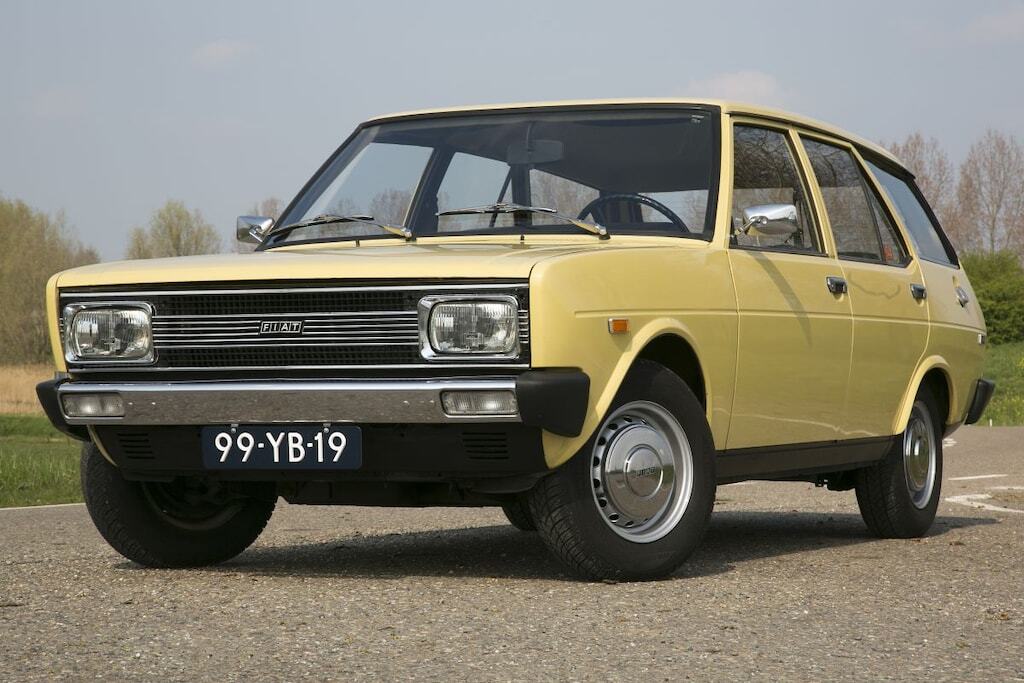
Station wagons were long considered workhorses, sometimes looked down upon if you also used them for your family. But in the Renault 12 Break and Fiat 131 Mirafiori Familiare, it’s comfortable for your family members, even in the back seat. You can certainly take that work home with you. All that remains is the choice between French ride comfort or a touch of Italian sportiness.
There are workhorses and luxury horses, according to an old saying. That also applies to cars. Station wagons were long considered workhorses, company cars where functionality was paramount. Passenger comfort and design were of secondary importance, luxury was far to be found. The loading space was often not lined, and leaf springs adorned under the rear axle. Such stations were a bit looked down upon if you also used them for your family. As if you were taking your work home. Until the late seventies, lifestyle stations began to emerge. They were more comfortably equipped, more luxuriously decorated, and the design of the stern was no longer left to the intern, but seriously addressed. Think, for example, of the Renault 18 Break, the successor to the Renault 12 Break in this test. It had such a beautiful rear end that many people thought it was more successful than the sedan. And from the Fiat 131 Mirafiori, the other test candidate, the extremely luxurious Supermirafiori came out in the second series, which was also available as a station wagon. You can safely call that a lifestyle station, although no extra attention had been paid to the design of the rear. Since then, the station wagon has become increasingly established as a family car.
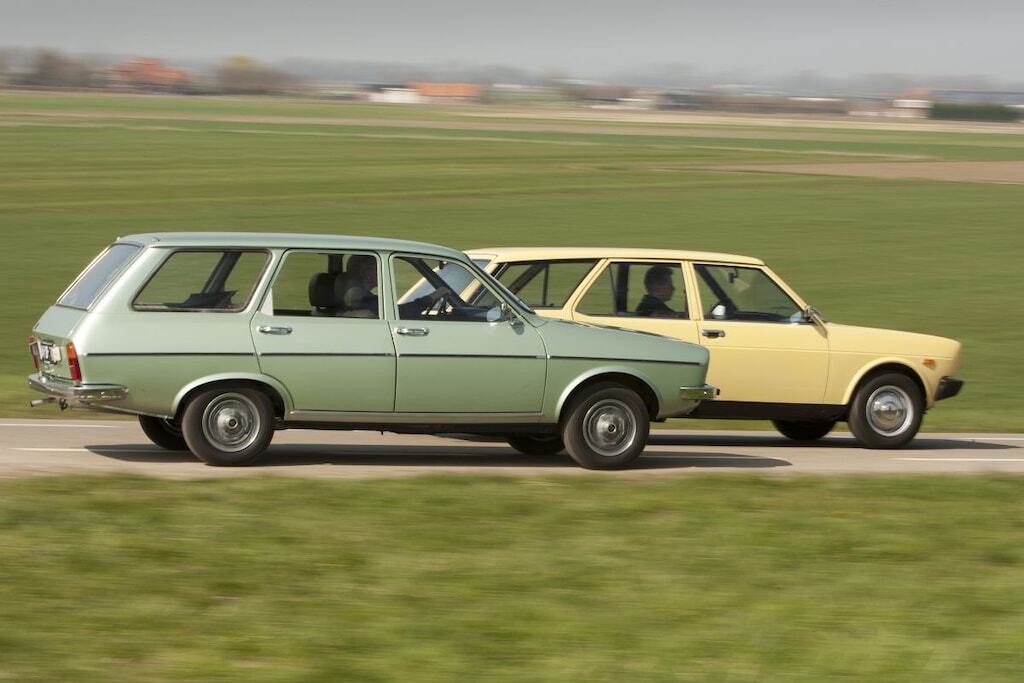
1300 with 65 hp: that was normal in the middle class
The egg-yellow Fiat 131 Mirafiori Familiare from this test is a 65 hp strong 1300 from 1976. There was also a 1600 available at the time with 75 hp. The 131 Mirafiori – that name referred to the factory where the model was built – came on the market in 1974 as the successor to the 124. Its main competitors were the Ford Taunus, Opel Ascona, Peugeot 304, Renault 12, Mazda 818 and VW Passat. Actually, the model should only have been called Mirafiori, because Fiat wanted to move away from numbers as type designations, but it has become a hybrid name. The engines were taken from the predecessor – cast iron blocks with aluminum head – and drove the rear wheels. There were two body variants: a sedan (two- or four-door) and a station wagon, called Familiare, which was built at Seat in Spain. In addition to the basic version, there was the more richly equipped ‘Special’, recognizable by double round headlights, a chrome strip around the side windows and a different instrument panel. In 1976, the sporty 131 Abarth appeared with 2-liter sixteen-valve engine (140 hp), Kugelfischer fuel injection and independent rear suspension. This was a tame version of the rally cannon of the same name that Fiat wanted to homologate. That was only possible if it was a production model of which at least 500 copies had been produced. In rally specification, with its 215 hp, it was a formidable weapon, which won the WRC Rally three times (in 1977, 1978 and 1980), succeeding the Lancia Stratos.
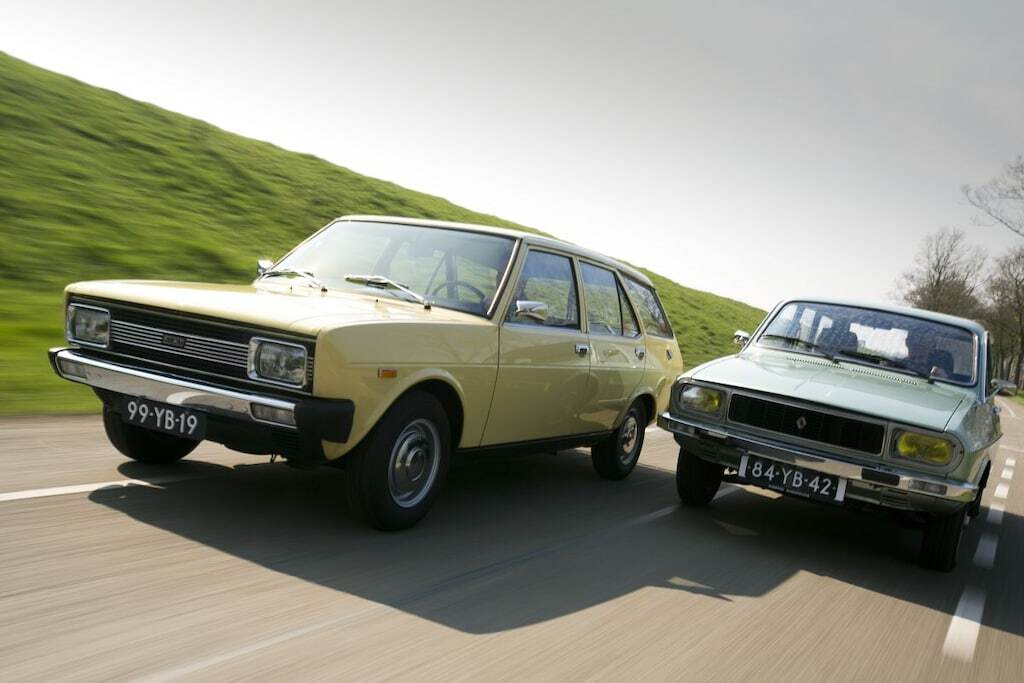
Station wagon became Panorama after facelift
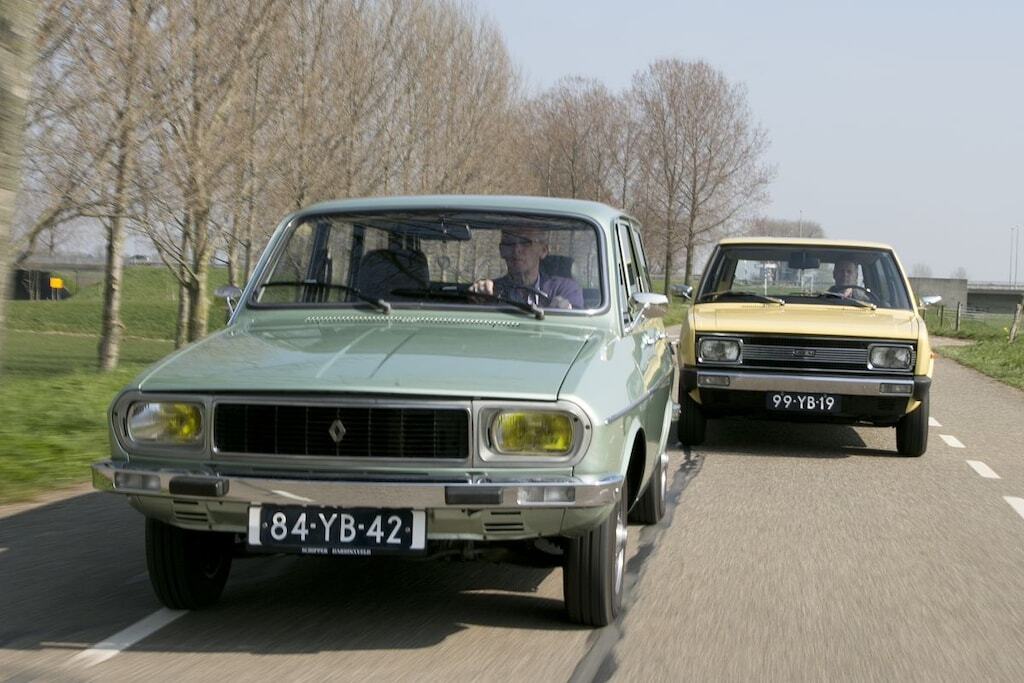
Renault 12 came on the market in 1969
The Renault 12 came on the market in 1969 as the successor to the models 8 and 10. Its direct competitors were the Peugeot 304, Simca 1301, Fiat 124, Ford 12M and Ford Escort. The model was available as a four-door sedan and as a station wagon, the Break. For its time, it was a modern car with front-wheel drive, a spacious and comfortable interior, good performance and low fuel consumption. However, it did not have the independent suspension that characterized Renaults, but a rigid rear axle. The engine was based on the cast iron block of the 8 and 10 Major, which had been enlarged to 1,289 cc, and was located longitudinally in front of the front axle. There were two equipment levels: L and TL.
From 1970 to 1974, the potent 12 Gordini was available, with the aluminum 1,565 cc engine from the Renault 16 TS, which produced 125 hp and was equipped with a five-speed gearbox and disc brakes all around. In 1972, the top model 12 TS appeared. This had a double carburetor on the 1.3-liter engine, which increased the power to 64 hp (top 150 km/h). ‘Airplane seats’ (front seats with integrated headrests) and a tachometer were the most striking changes inside. At the end of 1973, the TR became available, which in terms of equipment was between the TL and TS and had an automatic transmission.
Renault 12 produced until 2004
In 1975, the 12 received a facelift. A different nose, larger taillights for the sedan and rubber strips on the bumpers are the main external features. Inside, there was an updated dashboard, a plastic-covered four-spoke steering wheel and a little more luxury. In 1980, French production was terminated in favor of the 18, which had appeared in 1978. After that, the 12 continued to be produced under license until 2004 (!), including in Turkey, Romania, Brazil, Colombia, Argentina and Australia. Our algae-green test candidate comes from the second series, was built in 1977, and – rare for a Break – has an automatic transmission.
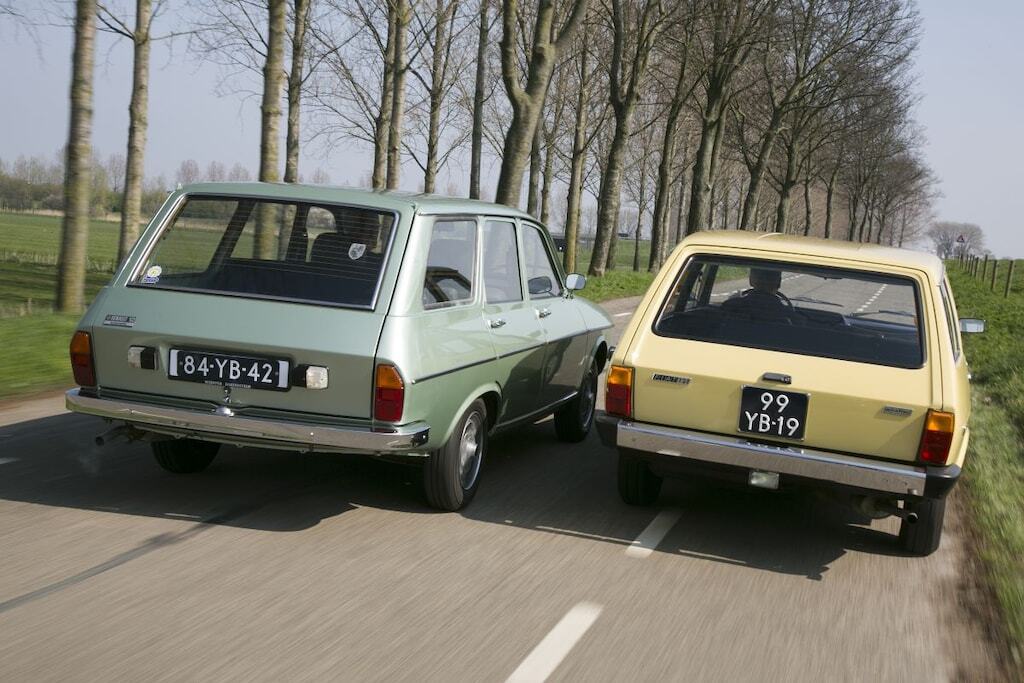
Renault looks older than Fiat
From the outside you can see that the conception date of the Renault was a few years earlier than that of the Fiat. Due to the larger glass surfaces, the bumpers with plastic corner pieces and the tighter lines, the Fiat looks a bit more recent. It is striking that the roofline of the Italian slopes backwards, which probably does not benefit the loading capacity. The beautiful Dunlop wheels of the Renault are an original accessory. Thoughtful detail: the trim strip of the Frenchman does not deliberately connect under the fuel cap. If you spill while refueling, the fuel runs behind the strip instead of deflecting over the strip towards your clothes.
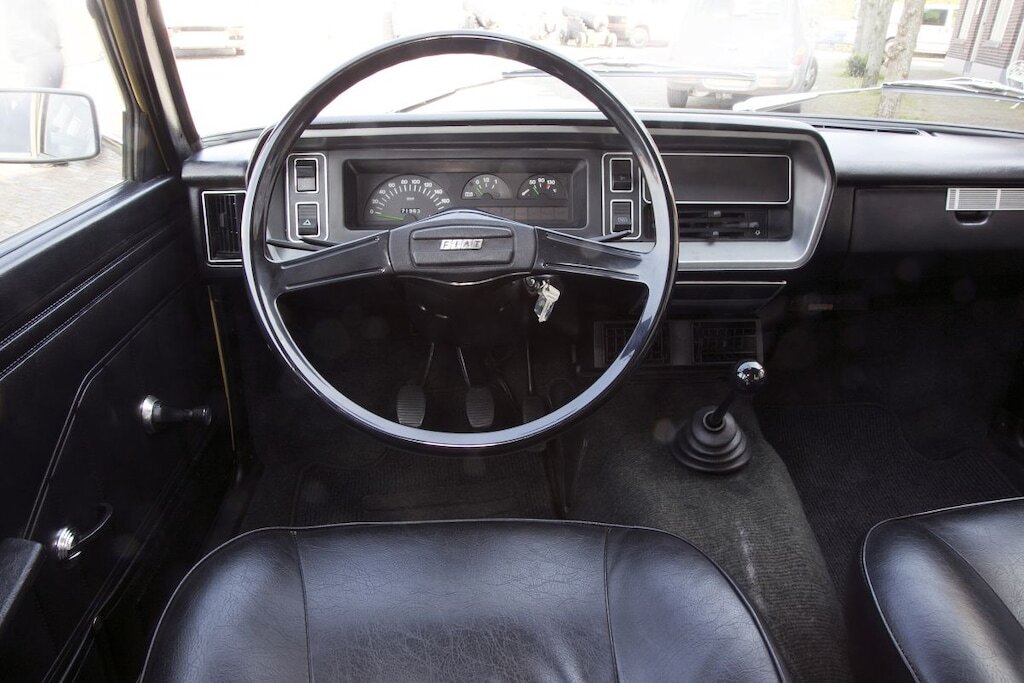
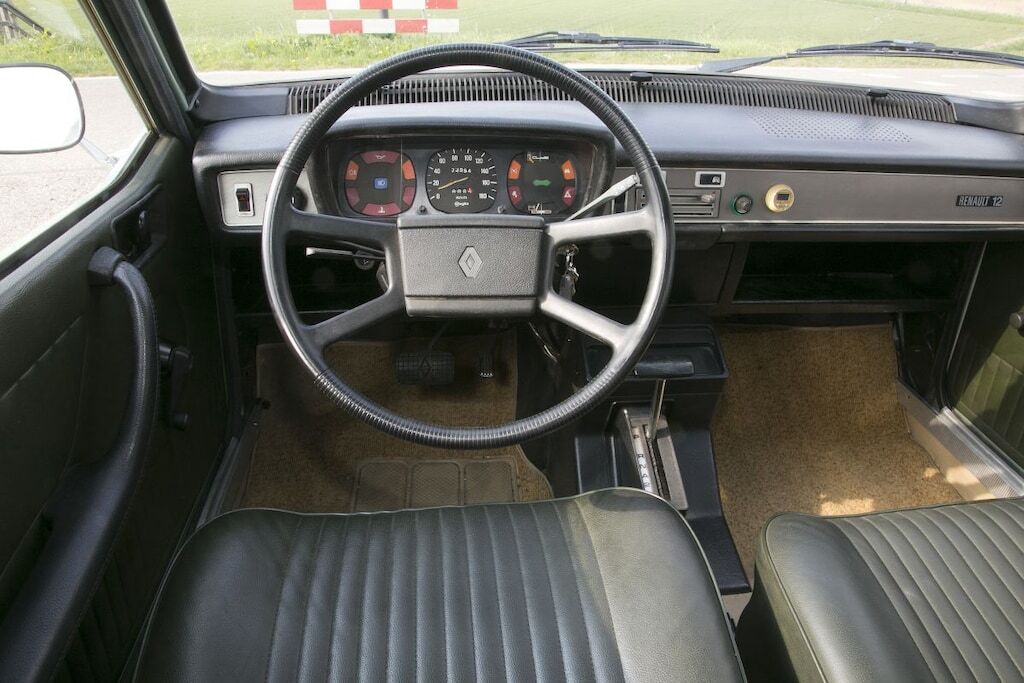
Inside mainly spacious!
Inside we find vinyl upholstery in both test candidates – dark green in the Renault, black in the Fiat – and otherwise only the bare essentials. Both interiors are surprisingly spacious. Both front and rear, the fairly soft furniture is surprisingly comfortable. You shouldn’t expect much support and the vinyl does little to keep you in place. The headrests in the Renault are an original accessory. There is remarkably little headroom in the back seat of the Fiat. With my 1.93 m, I am more than half a head too tall.
The dashboard of the Renault looks cheerful thanks to the numerous colored lights in the clocks. The facelift nicely camouflages here that the model had already been around for a while at the time. The air vent over the entire width under the windshield is typical Renault of that time and works adequately. Also characteristic of Renault is the rotary knob on the left for adjusting the headlight height – certainly no unnecessary luxury on a station wagon.

The instrument panel of the Fiat looks less colorful, but tidy and contemporary, thanks to clean figures, the semi-circular shape of the clocks, the silver-colored lines around only four large toggle switches and the flat shape of the control levers on the steering column. Compared to that, the bakelite of the steering wheel and the gear knob seems dated.
Both candidates have rear seats in one piece; folding down in (unequal) parts was not yet common at the time. To fold down the backrest of the Fiat, you have to release a lock on both sides. So that means walking around. In the Renault that is arranged more conveniently: with a handle in the middle of the backrest you unlock the backrest. In both cars you have a completely flat loading floor. In the Renault it is slightly longer and higher, in the Fiat wider. Ultimately, you can stow slightly more cargo in the Fiat. Neither of them has tarpaulins for the luggage.
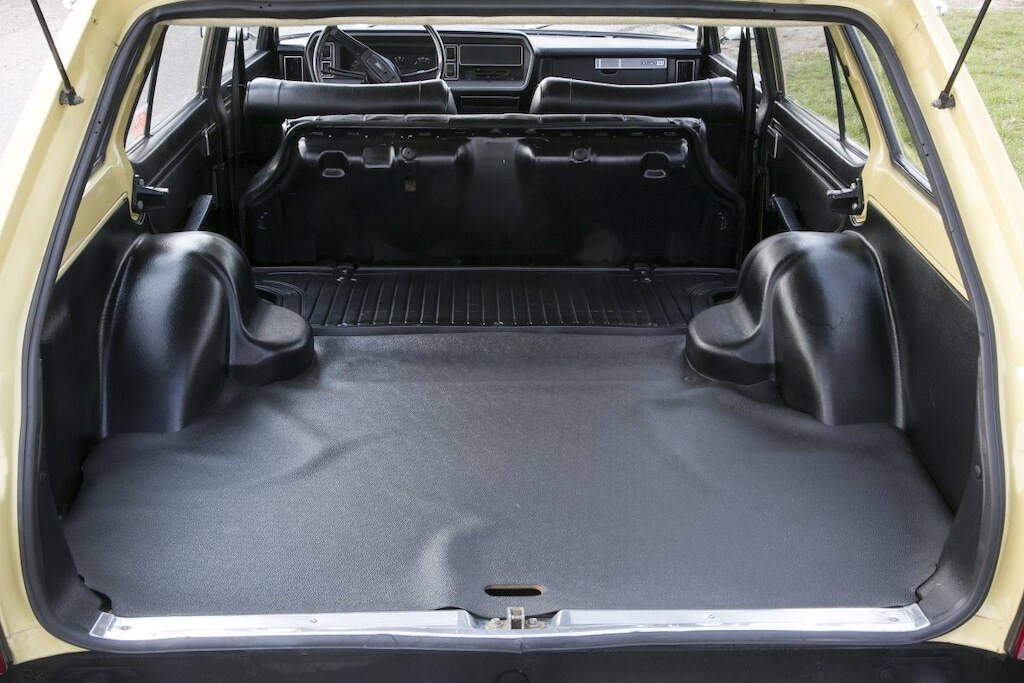
Renault drives more dated
As soon as you start driving you notice again that the Renault is from an earlier generation than the Fiat. Although they seem quite comparable on paper, the whole driving experience in the Frenchman feels a bit more dated than that in the Italian. Neither of them has power steering, but the Renault steers unexpectedly heavy and understeered. Here the fact that the engine is in front of the front axle takes its toll. Despite the extra power, the power source of the Frenchman does not come over very smoothly and from 80 km/h it makes a lot of noise. The automatic gearbox, on the other hand, shifts neatly and the brake pedal requires little force. The ride comfort is smooth, but without the excessive body roll in corners that characterizes many French cars from that time.
The Fiat comes across as lively and is easy to operate and steer. Only the long, sloping stick that comes directly out of the gearbox must be handled with conviction, especially if you want to reverse. And of course the Mirafiori does not steer lightly during parking maneuvers. Less driving noise penetrates into the interior than in the Renault, and what you hear has a sporty touch; we find that less disturbing. The suspension of the Fiat is firm, but certainly not stiff.
The Renault is therefore somewhat more dated on all fronts than the Fiat. But in terms of usage options, the Italian makes two major mistakes. If the rear seat has to be folded down regularly, it is annoying to have to walk around each time to release the backrest on both sides. And only people up to about 1.75 m tall fit in the back seat – something to take into account. It is of course just what you are looking for, but we prefer the Fiat, especially because of its driving character.